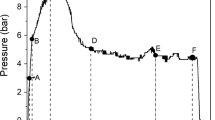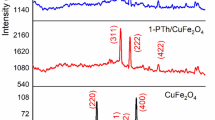Abstract
Poly(ethylene terephthalate) (PET) was depolymerized by aminolysis technique using ethylene diamine by aminolysis method and product form is α, ω-amino-oligo(ethylene terephthalamide). Depolymerization was carried by several techniques, such as solar energy, UV irradiation, microwave irradiation, and ultrasound irradiation. Ultrasonication was carried out at 20 and 40 kHz. UV irradiation was carried by varying the power source as 20 and 40 W and by varying the temperature. Microwave irradiation was done by keeping the power source as 300 W constant and reaction was carried out at three different temperatures, i.e. 100, 110 and 120 ºC, and then by keeping the temperature constant at 110 ºC, the power was varied as 500 and 700 W. Depolymerization with solar energy was done by just keeping all the ingredients in the air tight container under solar radiation. By UV irradiation, microwave irradiation and solar energy, none of the PET flakes remain unreacted. The time required for microwave is ~6 to 7 min, for UV irradiation it is 24 h and for solar energy it is 8 days. It is observed that among all the studied technique solar energy is the most eco-friendly one. Hence, the product obtained from it was characterized by DSC, FTIR, 1H-NMR analysis.





Similar content being viewed by others
References
Oku A, Tanaka S, Hata S (2000) Chemical conversion of poly(carbonate) to bis(hydroxyethyl) ether of bisphenol A. An approach to the chemical recycling of plastic wastes as monomers. Polymer 41:6749–6753
Achilias DS, Roupakias C, Megalokonomos P, Lappas AA, Antonakou EV (2007) Chemical recycling of plastic wastes made from polyethylene (LDPE and HDPE) and polypropylene (PP). J Hazard Mater 149:536–542
Hata S, Goto H, Oku A (2002) Chemical conversion of poly(carbonate) to 1,3-dimethyl-2-imidazolidinone (DMI) and bisphenol—a: practical approach to chemical recycling of plastic wastes. Polymer 43:2109–2116
More AP, Kute RA, Mhaske Shashank T (2014) Polyesteramide resin from PET waste and fatty amide. Pigment Resin Technol 43(5):285–292
Karayannidis GP, Nikolaidis AK, Sideridou ID, Bikiaris DN, Achilias DS (2006) Chemical recycling of PET by glycolysis: polymerization and characterization of the dimethacrylated glycolysate. Macromol Mater Eng 291:1338–1347
Sinha V, Patel MR, Patel JV (2008) Pet waste management by chemical recycling: a review. J Polym Environ 18:8–25
More AP, Kute RA, Mhaske ST (2014) Chemical conversion of PET waste using ethanolamine to bis(2-hydroxyethyl) terephthalamide (BHETA) through aminolysis and a novel plasticizer for PVC. Iran Polym J 23:59–67
Achilias DS, Redhwi HH, Siddiqui MN, Nikolaidis AK, Bikiaris DN, Karayannidis GP (2010) Glycolytic depolymerization of PET waste in a microwave reactor. J Appl Polym Sci 118:3066–3073
Tawfik ME, Ahmed NM, Eskander SB (2011) Aminolysis of poly(ethylene terephthalate) wastes based on sunlight and utilization of the end product [bis(2-hydroxyethylene) terephthalamide] as an ingredient in the anticorrosive paints for the protection of steel structures. J Appl Polym Sci 120:2842–2855
Parab YS, Shukla SR (2013) Novel synthesis, characterization of N1, N1, N4, N4-tetrakis (2-hydroxyethyl) terephthalamide (THETA) and terephthalic acid (TPA) by depolymerization of pet bottle waste using diethanolamine. J Macromol Sci A 50:1149–1156
Shah RK, Shukla SR (2010) Effective aminolytic depolymerization of poly(ethylene terephthalate) waste and synthesis of bisoxazoline therefrom. J Appl Polym Sci 125:3666–3675
Soni RK, Teotia M, Dutt K (2010) Studies on synthesis and characterization of a novel acrylic aromatic amide oligomer of aminolysed endproducts generated from pet waste with hydrazine monohydrate and its photocuring with acrylate monomer. J Appl Polym Sci 118:638–645
Elsaeed SM, Farag RK (2009) Synthesis and characterization of unsaturated polyesters based on the aminolysis of poly(ethylene terephthalate). J Appl Polym Sci 112:3327–3336
Sadeghi GMM, Shasmi R, Sayaf M (2011) From aminolysis product of PET waste to novel biodegradable polyurethanes. J Polym Environ 19:522–534
El-Sherbiny SI, Morsy FA, Atta AM (2010) Synthesis of new cationic surfactants based on recycled poly(ethylene terephthalate) for deinking of solvent-based ink from low-density polyethylene surface. J Appl Polym Sci 118:1160–1172
Kojima Y, Koda S, Nomura H (2001) Effect of ultrasonic frequency on polymerization of styrene under sonication. Ultrason Sonochem 89:75–79
Kruus P, Lawrie JAG, O’Neill ML (1988) Polymerization and depolymerization by Ultrasound. Ultrasonics 26:352–355
Decker C (1998) Special review, the use of UV irradiation in polymerization. Polym Int 45:133–141
Achilias DS, Tsintzou GP, Nikolaidis AK, Bikiaris DN, Karayannidis GP (2011) Aminolytic depolymerization of poly(ethylene terephthalate) waste in a microwave reactor. Polym Int 60:500–506
Dutt K, Soni RK (2014) Synthesis and characterization of bis-amino ethyl terephthalamide from PET waste and its applications as hardener in DGEBA. Int J Plast Technol 18:16–26
Ghosea S, Isayeva AI, Meerwallb EV (2004) Effect of ultrasound on thermoset polyurethane: NMR relaxation and diffusion measurements. Polymer 45:3709–3720
Shim SE, Ghose S, Isayev AI (2002) Formation of bubbles during ultrasonic treatment of cured poly(dimethyl siloxane). Polymer 43:5535–5543
Paliwal NR, Mungray AK (2013) Ultrasound assisted alkaline hydrolysis of poly(ethylene terephthalate) in presence of phase transfer catalyst. Polym Degrad Stabil 98:2094–2101
Grassie N (1973) Photodegradation of methacrylate/acrylate copolymers. Pure Appl Chem 34:247–258
Vijayakumar S, Rajakumar PR (2012) Infrared spectral analysis of waste pet samples. ILCPA 4:58–65
Hoang CN, Dang YH (2013) Aminolysis of poly(ethylene terephthalate) waste with ethylenediamine and characterization of a, u-diamine products. Polym Degrad Stabil. 98:697–708
Acknowledgements
We would like to express our sincere thanks to DST INSPIRE, New Delhi for providing the support in terms of fellowship.
Author information
Authors and Affiliations
Corresponding author
Rights and permissions
About this article
Cite this article
More, A.P., Kokate, S.R., Rane, P.C. et al. Studies of different techniques of aminolysis of poly(ethylene terephthalate) with ethylenediamine. Polym. Bull. 74, 3269–3282 (2017). https://doi.org/10.1007/s00289-016-1888-8
Received:
Revised:
Accepted:
Published:
Issue Date:
DOI: https://doi.org/10.1007/s00289-016-1888-8




